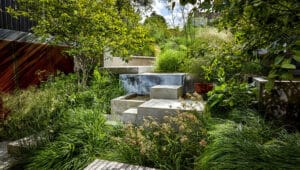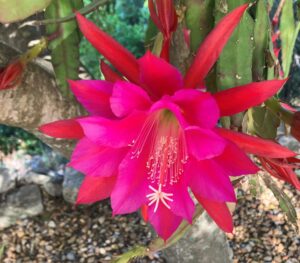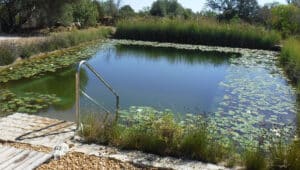WHO COULD doubt that every new garden should start with a plan? Remarkably enough, many homeowners begin not with a plan, but with a casual visit to the nearest garden centre, where an arbitrary selection of trees and plants is made only to be inappropriately and bizarrely placed with other plants and trees already in the garden, with no thought to the garden structure. The first rule of gardening then, is that ‘planning pays off’.
A properly designed plan includes two key elements: the structure, i.e. the physical layout and profile (including pool, driveway and terraces) and the planting plan, i.e. the position of at least the major tree and plant elements.
Why is a plan important? What many fail to realise is that, unless you are prepared to face major upheaval and significant cost in the future, you have only one chance to get the basics of a garden right – that is at the outset! Too often do we find homeowners wanting large trees planted in, or removed from, positions impossible for a machine to reach; or wanting an untidy, ill-kept slope near a pool to be restructured or terraced. So it is vital to get the large ‘difficult-to-change’ elements of a garden planned well in advance and with great care and forethought.
Irrigation
Included in this category (along with terracing, walling, contouring and the planting of major elements) is the often neglected, but vitally important topic of irrigation. Builders are generally oblivious to a gardener’s needs and will happily pour concrete for outside terracing or pathway, without a thought for the desired flower box on outside wall or pillar, or for the only irrigation route to a key section of garden. The second rule of gardening then, is ‘to get the irrigation in ahead of the concrete’.
Does a planting plan begin with the biggest items just because they are (generally) the most expensive? No. The real reason is that the biggest items, i.e. the trees, play the commanding role in any planting plan and provide the main focal point. Rather spend available money on one tree of good size and quality – to give the garden a focal point – than to squander the money on several smaller items that will take years to grow. At least one large tree will also redress the imbalance of mass between house and newly planted garden and can break the dominance of wall or roofline.
The choice of tree variety will determine the garden’s character. This observation prompts the third rule of gardening: ‘choose one garden theme or the other, and then stick to it’. In other words, aim to achieve coherence in garden style. Exotic trees, such as palms, look best in exotic gardens. Mediterranean trees, such as olives, pines or carobs, look best when surrounded by indigenous or Mediterranean shrubs and plants, such as lavandulas, rosmarinus and thymus.
Rarely do the two themes mix successfully en masse, although it is perfectly possible to add highlights from one theme to the other.
The selection and positioning of trees should also be done under the aegis of the fourth rule of gardening: ‘look to the future five or ten years hence’. So obvious is this advice, that it is astonishing how often it is ignored. A palm wrongly position can cause major problem years hence. Yet how commonly this occurs, to a home owner’s regret and cost.
The choice of just one, or just a few large trees, whether exotic or Mediterranean, will instantly confer one further advantage on a new garden. It will provide that most desirable of summer commodities, and one that is in very short supply in a new garden – shade.
In summary, the wise selection of quality trees of size will give stature to a garden, provide strategic focal points, balance garden with house, block unsightly views, create perspective, give shade, and provide years of pleasure from the moment of planting.
Hedging
So once the plan is drawn, the groundwork (terracing, stone walling, etc) prepared; the beds mapped out along with walkways, pergolas, gravelled areas and flower boxes, big trees selected and positioned, irrigation installed (all before the builders have completed the terracing and other outdoor infrastructure), we are now ready for hedging and the planting of bushes, shrubs and ground cover.
The rest is easy really! But with one proviso – the fifth rule of gardening: ‘Always go for quality over quantity’. This is part of the ‘spend wisely’ philosophy that applies to all planting, trees or otherwise. Choose more expensive yet easier to manage indigenous species such as helichrysum, rosmarinus and results will be longer lasting and much better value.
Similarly, cheap and fast growing hedging, such as myoporum, will produce quick results – yet will demand frequent cutting while presenting a dull, uniform, straight-line look. Rather choose a mixed species, ecologically friendly, combination hedge that presents variety, varied shape and shelter for all manner of insects and fauna, so helping to maintain the balance of nature.
Finally, here’s a one, two, three for a good gardening project:
• Make a proper plan.
• Choose trees by size rather than by number.
• Go for quality planting over quantity every time.
• A garden built step by step on quality will endure, prosper and give lasting satisfaction.
























